Sylvania Halogen metal halide lamps
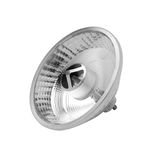
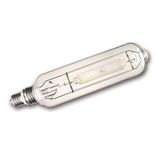
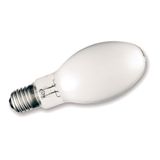

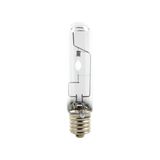
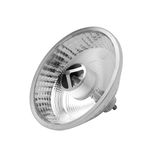
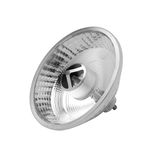
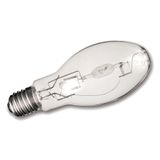
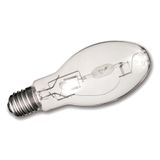

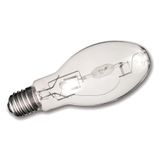
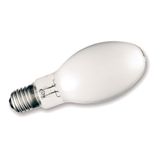
sylvania metal halide lamps range and applications
High-output sources still make sense where tall spaces, long throws, and tight maintenance windows dominate. Families span 35–2000 W with clear or coated envelopes for streets, yards, arenas, and high-bay interiors. Warm-up is typically 2–5 minutes; hot restrike depends on gear and lamp class. When sites need uniform optics across phases, sylvania metal halide lamps let teams hold holders, reflector geometry, and photometric intent without rewriting drawings.
sylvania mh lamps electrical and gear pairing
Ballasts and ignitors decide stability. Electronic HID units (EN 61347-2-12) tighten arc current and cut flicker; magnetic sets with external ignitors remain valid where service access is easy. Declare end-of-life lamp voltage for sizing, not just nominal. Ignitor pulses usually sit in the 3–5 kV range with cable-length limits printed on the gear. On estates mixing controls, sylvania mh lamps can dim on electronic gear for night setback when local code permits.
sylvania high intensity discharge lamps photometrics and colour
Ceramic arc tubes push colour stability and CRI to 85–95; quartz types trade some stability for higher output bins. CCT options commonly 3000/4000/5000/6500 K with ≤5 SDCM per family, centre-beam intensity driven by reflector match and arc position. Planning grids should treat these as sylvania high intensity discharge lamps with defined lumen depreciation and colour shift, then set group relamp thresholds before uniformity drifts.
sylvania metal halide bulbs operating limits and service
Thermal paths matter. Keep airflow around gear trays, confirm socket spring force, and retain UV shields where the lamp code requires enclosed fixtures. Ambient −25…+50 °C is typical when luminaires are ventilated; vibration calls for correct torque on double-ended clamps. For contractors managing legacy stock, sylvania metal halide bulbs with the same base and lamp voltage keep spares interchangeable across fittings.
sylvania industrial mh lighting for plants and logistics
Production halls, foundries, and tall racking aisles need punch with controlled spill. Narrow and asymmetric reflectors lift horizontal and vertical lux without lighting the roof. Surge protection on outdoor feeders should sit 4–6 kV L-N; contactors must tolerate ballast peaks. Maintenance teams standardise zones under sylvania industrial mh lighting so gear curves, ignitor types, and run-hour logs remain consistent.
sylvania commercial metal halide lights for retail and venues
Show floors, atria, and sports courts favour tight beams and high CBCP to keep contrast on the subject. Coated lamps soften cutoff in comfort-sensitive spaces; clear versions carry reach on long throws. Where dimming is specified, confirm ballast compatibility and minimum stable level. Designers naming sylvania commercial metal halide lights typically lock beam set, CCT/CRI, and luminaire family to protect the look over multi-year phases.
sylvania floodlight mh lamps optics and aiming
Area and façade floodlighting relies on repeatable hotspots, not guesswork. Choose optics—narrow, medium, wide, or asymmetric—based on mounting height and setback; align arcs to the reflector index to prevent tilt-induced colour fringing. For masts and catwalks, specify captive hardware and anti-vibration kits. Facilities that document sylvania floodlight mh lamps by base, wattage, and optic keep night crews fast and uniform.
Technical specifications and standards
- Power classes: 35–2000 W families; efficacy ~65–110 lm/W type-dependent; PF per ballast, THD declared on electronic gear.
- Colour: CRI 80–95; CCT 3000–6500 K; ceramic tubes for stability; quartz for output.
- Operation: warm-up 2–5 min; hot restrike per ignitor/ballast; ambient −25…+50 °C with ventilated luminaires.
- Interfaces: E27/E40, RX7s, G12, G8.5, G22, PGJX; retain UV shields where mandated.
- Compliance: IEC 62035 lamp safety; IEC 60061 caps; EN/IEC 61347 and 60927 ballasts/ignitors; EN 55015, EN 61000-3-2 EMC; EN 62471 photobiological assessment.
Applications and compatibility
- Logistics yards and ports: asymmetric reflectors, high surge level, coated lamps near residences.
- Sports and arenas: clear lamps, tight beams, hot-restrike strategies for event recovery.
- High-bay manufacturing: medium beams, vibration-rated holders, planned relamp cycles to protect uniformity.
- Façades and monuments: glare control, shield kits, and controlled spill onto adjacent properties.
Check cable lengths against ignitor limits, inspect sockets at relamp, and verify enclosure integrity for UV and fragment retention.
Selection criteria for B2B clients
- Fix mounting height, setback, and target lux/uniformity. 2) Choose optic first, then lamp wattage to hit spacing targets with the fewest poles. 3) Lock base type and lamp voltage against ballast data; record end-of-life voltage. 4) Decide dimming and setback rules; confirm minimum stable output on the chosen gear. 5) Document run-hour thresholds and spares by ANSI/MPN to keep colour and lumen drift under control.
Integration with other Sylvania systems
Use Sylvania electronic HID gear where dimming or flicker control matters; legacy magnetic lines remain viable with correct ignitors and contactors. Photoelectric cells and CMS timers sit upstream; motion nodes trim levels in yards when allowed by code. For hybrid estates migrating to LED, keep bracket geometry and aiming hardware common so optics and pole spacings remain valid.
Advantages of working with Bankoflamps
We align B2B pricing to area schedules and expose live EU stock before closures are booked. Quotes land in about an hour with EAN/MPN so variants stay fixed. Your portal shows lead times, shipment status, and downloadable price lists with stable validity windows. Approved clients can use post-payment up to 30 days. We consolidate partials to cut freight, and your account manager cross-checks base type, ballast/ignitor pairing, surge level, reflector family, enclosure clearances, and relamp strategy against your drawings so cartons arrive site-ready across France, the Baltics, Germany, Spain, Italy, Belgium, and the Netherlands.